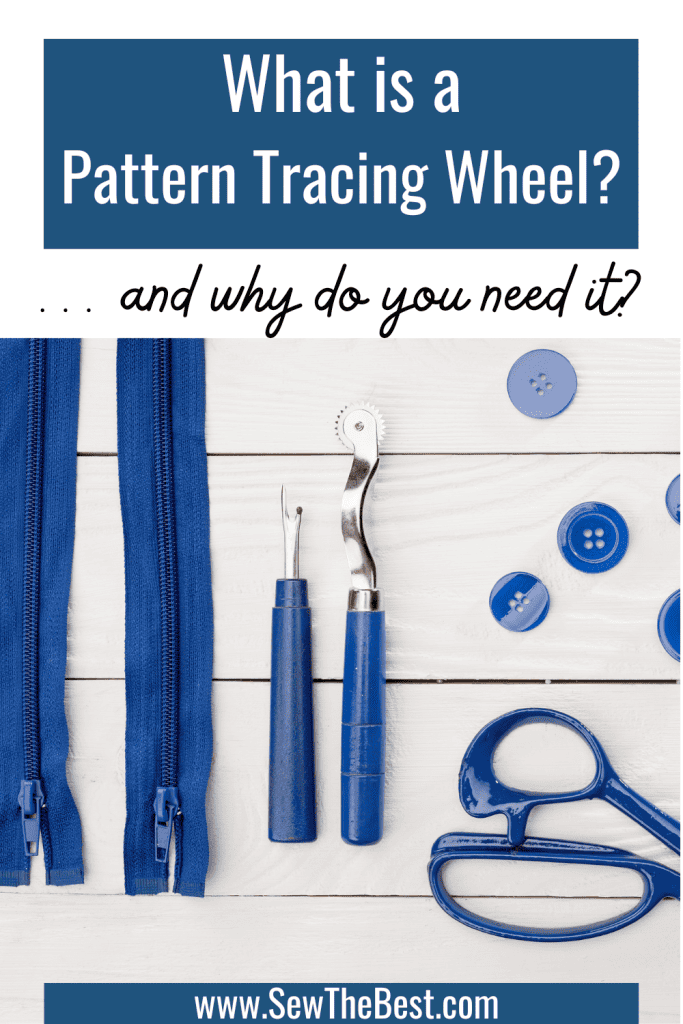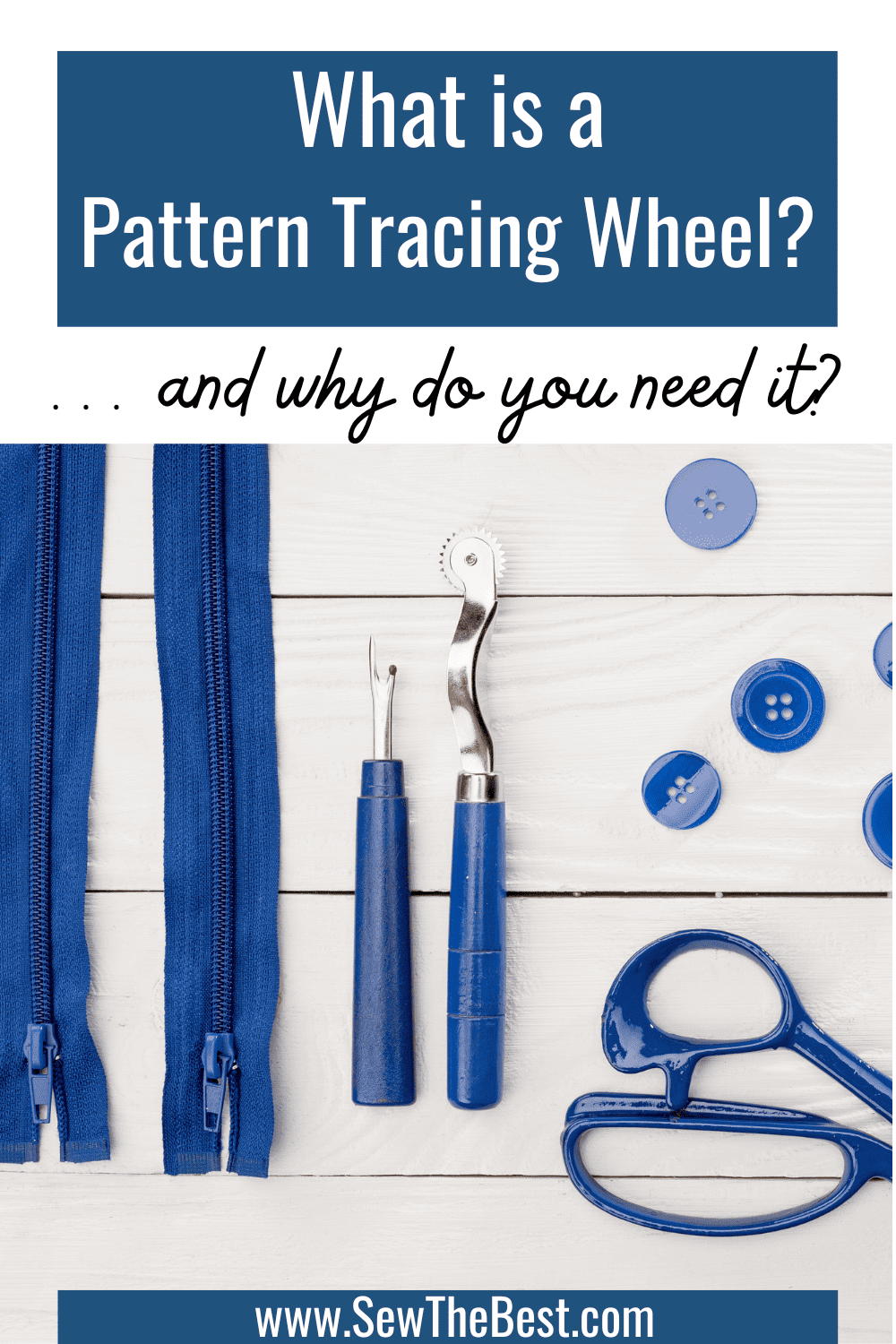Hey there, sewing enthusiasts and crafters! Have you ever wondered how professional tailors and dressmakers create those perfectly fitting garments? The secret lies in a humble yet essential tool called the pattern tracing wheel. If you’re new to the world of sewing or even a seasoned pro looking to expand your knowledge, you’ve come to the right place. In this blog post, we’ll delve into the fascinating world of pattern tracing wheels and uncover their role in creating accurate patterns for your sewing projects. So, grab a cup of tea and get ready to unravel the mystery behind this indispensable tool. Trust us, you won’t want to miss it!

If you’re in a hurry (or just curious!) –
✅ Check deals on Pattern Tracing Wheels


What is a pattern tracing wheel?
A pattern tracing wheel is a handy tool used in sewing and dressmaking. It is a small, handheld device that helps transfer pattern markings onto fabric. The wheel itself usually has a serrated edge with tiny teeth or spikes. Once you have your fabric laid out with transfer paper and your pattern on top, you can use the tracing wheel to mark the pattern onto the fabric. By rolling the wheel over the pattern, the spikes press through the fabric into the transfer paper, leaving a series of small dots that match the markings on the pattern. This allows you to easily trace the shape and details of the pattern onto the fabric.
Different types of pattern tracing wheels
There are several different types of pattern tracing wheels available on the market. One common type is the serrated tracing wheel, which has small teeth or serrations on the wheel. These serrations leave a series of small dots on the fabric, marking the pattern details. Another type is the smooth tracing wheel, which has a smooth wheel without serrations. These would leave a solid line mark on your fabric. The pressure applied by the wheel transfers the pattern markings onto the fabric, creating a clear and precise outline.
Some pattern tracing wheels come with multiple wheels of different sizes, allowing for more versatility in marking different types of patterns. There are also ergonomic tracing wheels available, designed with comfortable handles to reduce hand fatigue during prolonged use.
Tips for using a pattern tracing wheel effectively
Using a pattern tracing wheel effectively requires some practice and attention to detail. Here are a few tips to help you get the best results:
- Choose the right wheel: Consider the type of fabric you are working with and select a tracing wheel that is suitable for that fabric. Serrated wheels work well on most fabrics, but smooth wheels are better for delicate or easily damaged fabrics.
- Test on scrap fabric: Before using the tracing wheel on your actual fabric, test it out on a scrap piece of fabric and tracing paper to ensure that the markings are clear and won’t damage the fabric.
- Apply even pressure: When using the tracing wheel, apply even pressure to ensure that the markings are transferred accurately. Too much pressure can cause the fabric to stretch or distort, while too little pressure may result in faint or incomplete markings.
- Use a steady hand: Keep your hand steady while using the tracing wheel to avoid wobbly or uneven lines. This will help create clean and precise markings.
- Be mindful of the pattern markings: Pay close attention to the pattern markings and ensure that you are transferring them accurately onto the fabric. Take your time and double-check the alignment and placement of the markings.
By using a pattern tracing wheel correctly, you can achieve professional-looking results and ensure that your garment or project turns out as intended.
What is a pattern tracing wheel? FAQ
What is the purpose of using a pattern tracing wheel?
The purpose of using a pattern tracing wheel is to transfer patterns onto fabric or paper. This handy tool consists of a handle and a serrated wheel that is designed to roll smoothly over the pattern and press into transfer paper, leaving a series of small marks in its wake. These transfer paper marks create a dotted line that can be easily followed when cutting or sewing the fabric. By using a pattern tracing wheel, you can accurately transfer pattern markings, such as darts, notches, and seam lines, without the need for tedious manual tracing or marking. This not only saves time but also ensures that your finished garment or project is precise and well-fitted. Whether you are a beginner or an experienced sewer, a pattern tracing wheel is an essential tool that can greatly simplify your pattern transfer process.
Can a pattern tracing wheel be used on all types of fabric?
Yes, a pattern tracing wheel can be used on most types of fabric. However, it is important to consider the fabric’s thickness and texture before using the tracing wheel. Thicker fabrics, such as denim or canvas, may require more pressure to transfer the pattern onto the fabric. On the other hand, delicate or sheer fabrics might be better suited for a tracing wheel with a finer wheel or using a different method altogether, as the pressure from the wheel could potentially damage the fabric. It is always a good idea to test the tracing wheel on a scrap piece of fabric before using it on your main project to ensure that it doesn’t cause any unwanted damage or distortion.
Are there different types of pattern tracing wheels available?
Yes, there are different types of pattern tracing wheels available. These wheels come in various designs and have specific features that cater to different needs. Some pattern tracing wheels have a serrated edge, while other pattern tracing wheels have a smooth edge, which is suitable for general tracing purposes. Additionally, there are also pattern tracing wheels that come with an ergonomic handle, providing comfort and ease of use during long tracing sessions. So, depending on your specific requirements and preferences, you can choose from a range of pattern tracing wheels available in the market.
How accurate is a pattern tracing wheel in transferring patterns?
A pattern tracing wheel is a handy tool for transferring patterns onto fabric with precision and accuracy. The accuracy of a pattern tracing wheel depends on various factors, such as the quality of the tool itself, the fabric being used, and the technique employed. When used correctly, a pattern tracing wheel can create clear and accurate lines on the fabric, making it easier to follow the pattern while sewing. It is important to apply enough pressure while tracing to ensure that the wheel transfers the pattern onto the fabric smoothly. Additionally, using a pattern tracing wheel on a flat and stable surface can enhance its accuracy by providing a consistent and even pressure. With practice and attention to detail, a pattern tracing wheel can be a reliable tool for transferring patterns onto fabric.
Can a pattern tracing wheel be used for other crafts or activities?
Yes, a pattern tracing wheel can definitely be used for other crafts or activities. While its primary purpose is to transfer patterns onto fabric, it can also be used for a variety of other creative projects. For example, if you enjoy working with paper, you can use the tracing wheel to create decorative perforated edges or embossed designs. Additionally, if you are into woodworking, the tracing wheel can be a useful tool for marking patterns or transferring designs onto wood surfaces. Its versatility makes it a valuable tool for any craft enthusiast, allowing you to explore different mediums and add unique touches to your projects.
Is a pattern tracing wheel a necessary tool for sewing and crafting?
Yes, a pattern tracing wheel is a necessary tool for sewing and crafting. It is particularly useful for transferring pattern markings onto fabric. By tracing the lines on the pattern onto your fabric, it is much easier to follow the pattern accurately. It is especially beneficial for delicate or slippery fabrics that may be difficult to mark.
Can a pattern tracing wheel be used on delicate or sensitive fabrics?
Yes, a pattern tracing wheel can be used on delicate or sensitive fabrics. However, it is important to exercise caution and take certain precautions when using it on such fabrics. Delicate fabrics, such as silk or chiffon, can be easily damaged by the pressure and sharpness of the tracing wheel. Be sure to test using it with a scrap piece of fabric before using your project fabric.
Are there any alternatives to using a pattern tracing wheel?
Yes, there are alternatives to using a pattern tracing wheel. One common alternative is using tailor’s chalk or a fabric marking pen to directly mark the pattern onto the fabric. This method eliminates the need for a tracing wheel altogether, but it may not be as precise as using a tracing wheel.
How long does a pattern tracing wheel typically last?
A pattern tracing wheel typically lasts for a long time, depending on the frequency of use and the quality of the wheel. With proper care and maintenance, it can last for several years. The durability of the wheel is often determined by the materials it is made of, such as stainless steel or durable plastic. It is important to choose a high-quality wheel that is designed to withstand the pressure of tracing patterns onto fabric. Additionally, using the wheel on a smooth and flat surface can help prolong its lifespan. It is always a good idea to inspect the wheel for any signs of wear or damage and replace it if necessary to ensure accurate and smooth tracing.
In Summary
Thank you for taking the time to read this blog post about what a pattern tracing wheel is. I hope that I was able to provide you with a clear understanding of this essential tool for every sewing enthusiast. Whether you are a beginner or an experienced seamstress, a pattern tracing wheel is a must-have in your sewing kit. Its precise and efficient tracing capabilities can save you time and ensure accurate pattern transfers onto fabric. So, whether you’re working on a new dress, a tailored suit, or any other sewing project, make sure to have a pattern tracing wheel on hand. Again, thank you for reading, and happy sewing!
Related Posts
- Looking for more beginner sewing tools? Check out the best beginner sewing tools you need!
- Looking for more handy tools to make working with patterns easier? Check out our post, “What is a Pattern Notcher?“
